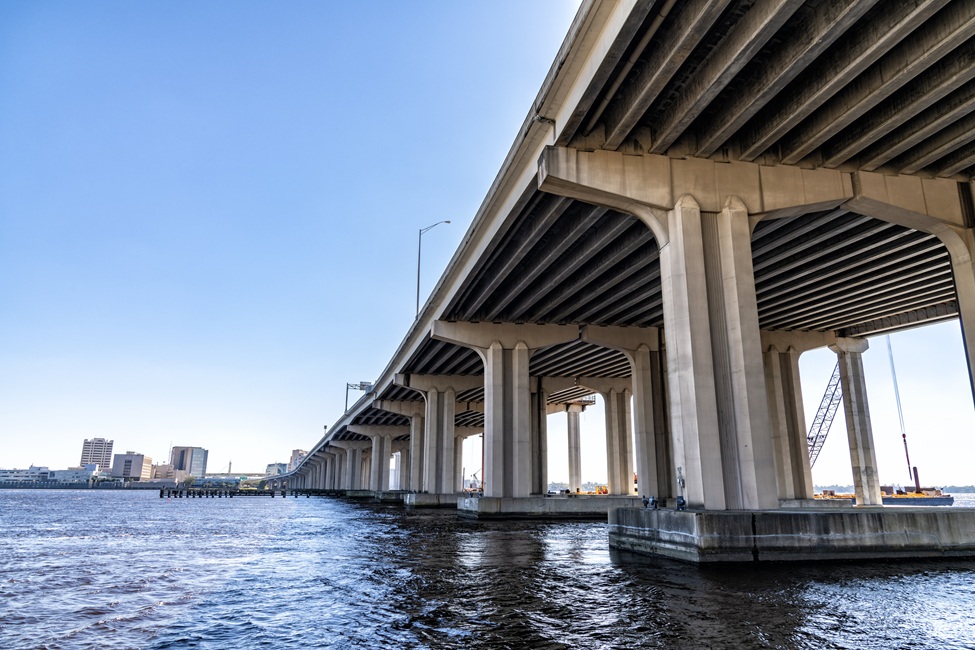Researchers Identify Most Efficient Reinforced Concrete Beam Design

Reinforced concrete structures are designed to handle mechanical loads but can face significant challenges when exposed to corrosive environments. Corrosion of steel reinforcement bars (rebar) weakens the material by reducing its cross-sectional area, which increases stress and may lead to cracks or failure.
Reinforced concrete, made stronger by embedding rebar, combines the tensile strength of steel with the compressive strength of concrete. This makes it more durable than regular concrete. However, corrosion is a global issue, causing annual losses between $1.8 and $2.5 trillion, with some countries – like the United States, the United Kingdom and Germany – experiencing losses up to 3% of their gross domestic product.
In an international collaboration, researchers from the College of Engineering and Computer Science at Florida Atlantic University, the Metallurgical Institute in Kryvyi Rih, Ukraine, and Ariel University in Israel, joined forces to explore how corrosion impacts the design of structures exposed to harsh environments. A major challenge they tackled was understanding the relationship between corrosion rates and structural stress, along with how long these structures can endure under corrosive conditions.
The study focused on optimizing the design of reinforced concrete elements, such as beams and columns, which are susceptible to corrosion in aggressive environments. The aim was to minimize initial costs, including both concrete and steel reinforcement, while optimizing the performance and durability of reinforced concrete elements to ensure their strength and reliability in corrosive environments.
For the first time, the team applied Dolinsky’s corrosion model to investigate how corrosion affects rebar in these structures. Dolinsky’s model predicts the impact of corrosion on materials, particularly steel reinforcement in concrete, by linking the stress on steel to its corrosion rate. The model shows how stress can either accelerate or slow the corrosion process.
Results of the study, published earlier this year in the journal Mechanics Research Communications, demonstrate that the most efficient design for reinforced concrete beams uses the smallest possible amount of material while still ensuring the structure remains strong and functional. This means that the beam’s dimensions and the number of rebar are minimized to keep costs down without compromising its performance.
Findings show that the beam’s ability to bend, or deflection, did not have an impact on the design’s optimization process. This suggests that, even under the most stressful conditions, the structure can still be designed efficiently.
The results also reveal that the initial size of the rebar used in the beam is influenced by the expected level of corrosion over time. The more corrosion anticipated, the larger the rebar may need to be to maintain the beam’s integrity and performance throughout its lifespan.
“It has been called ‘the great destroyer’ and ‘the evil.’ The Pentagon refers to it as ‘the pervasive menace.’ It destroys cars, fells bridges, sinks ships, sparks house fires and nearly brought down the Statue of Liberty. Rust costs America more than $400 billion per year – more than all other natural disasters combined,” said Isaac E. Elishakoff, Ph.D., co-author and Distinguished Research Professor, FAU Department of Ocean and Mechanical Engineering, citing from the book “Rust: The Longest War,” by journalist Jonathan Waldman. “Our model assumes that corrosion affects the rebar evenly on all sides. It shows how stress, like tension or pulling forces, speeds up the corrosion process – the higher the stress, the faster the corrosion. What’s innovative about this work is applying Dolinsky’s model directly to the steel reinforcement, treating it as a round rod. This approach helps us predict how corrosion will impact the structural elements over time, leading to smarter design choices that improve the structure’s long-term durability in corrosive environments.”
One of the most important things about this method is that it can be applied to a wide range of reinforced concrete elements, regardless of their shape, and in different types of mechanical load conditions.
“This model not only helps us track the progression of corrosion but also allows us to predict how the initial construction costs of the structure may increase over time as corrosion worsens. Depending on the level of load and the severity of corrosion, these costs can rise substantially, impacting both maintenance expenses and overall structural durability,” said Elishakoff. “This approach helps engineers better understand and optimize how reinforced concrete structures behave when exposed to corrosion, allowing for more durable and cost-effective designs.”
The researchers also looked at how difficult it is to monitor the condition of reinforced concrete structures over time, especially when corrosion reduces their strength and increases deformation, which affects the safety of these structures. As the global market for reinforcement is expected to reach $246.3 billion by 2028, preventing corrosion in these materials becomes even more important.
The collapse of the Champlain Towers South building in Surfside in 2021 killed 98 people and drew significant attention to the dangers of corrosion in reinforced concrete structures. One major issue in the collapse was the corrosion of the rebar in the concrete, particularly in the underground parking garage. The building had been exposed to the harsh coastal environment, with saltwater from the nearby ocean accelerating the corrosion process. As the rebar corroded, it expanded, causing cracks in the concrete, weakening the structure.
“Corrosion of steel reinforcement in concrete structures, especially in aggressive environments like coastal areas, can have devastating consequences if not properly addressed,” said Stella Batalama, Ph.D., dean of the FAU College of Engineering and Computer Science. “The Surfside condo collapse is a tragic example of how the corrosion of rebar, combined with insufficient maintenance and delayed inspections, can weaken a structure to the point of failure. This catastrophe emphasizes the importance of this collaborative research effort by Florida Atlantic, Ukraine’s Metalurgical Institute, and Israel’s Ariel University to help prevent such disasters and ensure the safety and longevity of our built environment.”
Study co-authors are Mark Mikhailovich Fridman, Ph.D., associate professor, Metallurgical Institute, and Yuri Ribakov, Ph.D., a professor and department head, Department of Civil Engineering, Ariel University.
 Isaac E. Elishakoff, Ph.D., co-author and Distinguished Research Professor, FAU Department of Ocean and Mechanical Engineering.
Isaac E. Elishakoff, Ph.D., co-author and Distinguished Research Professor, FAU Department of Ocean and Mechanical Engineering.
Elishakoff is a highly esteemed figure in engineering, holding fellowships with multiple prestigious organizations, including the European Academy of Sciences and the American Society of Mechanical Engineers.
This past year, he was honored as a Theodore von Kármán Fellow at the University of Aachen, Federal Republic of Germany. Kármán was a professor in Aachen (1913-30) before moving to the U.S. to direct the Guggenheim Aeronautical Laboratory at Caltech. He helped found the Jet Propulsion Laboratory and became the first chairman of the U.S. Army Air Forces’ Scientific Advisory Group. Kármán also contributed to founding the International Council of Aeronautical Sciences and the Von Kármán Institute for Fluid Dynamics, as well as received the first National Medal of Science from former U.S. President John F. Kennedy.
Elishakoff also has served as a Distinguished Research Professor at the Technion-Israel Institute of Technology – a leading university worldwide – since 2013. At FAU, he is the inaugural recipient of the Presidential Award for Career Achievement. He is the author of more than 620 scientific papers in leading international journals, author or editor of 34 books, and has published an impressive five books within five years.
-FAU-









